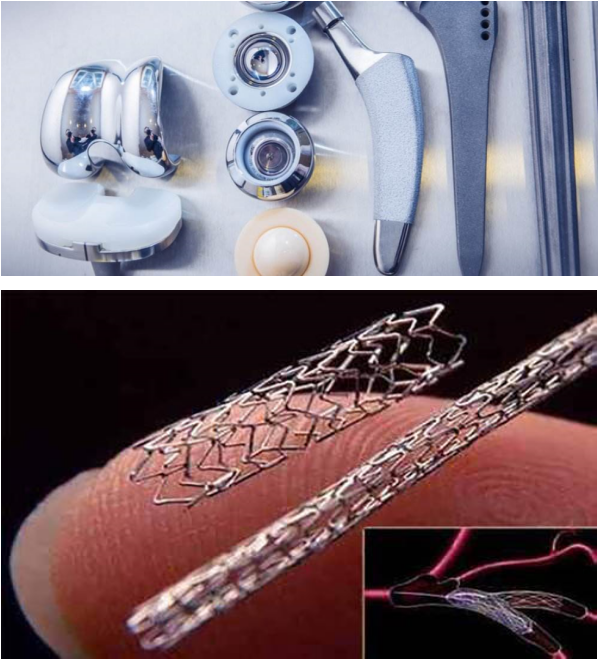
UMM Divisions
Understanding UMM Division
UMM Divisions
Biomedical Division
- Categories:UMM Division
- Author:
- Origin:
- Time of issue:2020-12-14 10:56
- Views:0
(Summary description)The biomedicine industry has been developing in the world for nearly 30 years, and the average annual sales of biomedicine has increased at a rate of 25%-30%. Among them, the United States represents a major biomedicine development country with a total output value of about 17% of GDP, becoming the most One of the growth industries. With the development of my country’s economy, changes in the living environment, changes in people’s health concepts, and the acceleration of population aging, the biomedical industry, which is closely related to the quality of human life, has maintained a continuous growth trend in recent years. The industry has become one of the fastest growing industries in the world, and my country, as the world's second largest economy, has also played an active role in the field of biomedicine.
Biomedical Division
(Summary description)The biomedicine industry has been developing in the world for nearly 30 years, and the average annual sales of biomedicine has increased at a rate of 25%-30%. Among them, the United States represents a major biomedicine development country with a total output value of about 17% of GDP, becoming the most One of the growth industries. With the development of my country’s economy, changes in the living environment, changes in people’s health concepts, and the acceleration of population aging, the biomedical industry, which is closely related to the quality of human life, has maintained a continuous growth trend in recent years. The industry has become one of the fastest growing industries in the world, and my country, as the world's second largest economy, has also played an active role in the field of biomedicine.
- Categories:UMM Division
- Author:
- Origin:
- Time of issue:2020-12-14 10:56
- Views:0
Introduction of Biomedical Division
 |
The biomedicine industry has been developing in the world for nearly 30 years, and the average annual sales of biomedicine has increased at a rate of 25%-30%. Among them, the United States represents a major biomedicine development country with a total output value of about 17% of GDP, becoming the most One of the growth industries. With the development of my country’s economy, changes in the living environment, changes in people’s health concepts, and the acceleration of population aging, the biomedical industry, which is closely related to the quality of human life, has maintained a continuous growth trend in recent years. The industry has become one of the fastest growing industries in the world, and my country, as the world's second largest economy, has also played an active role in the field of biomedicine.
Rheniummet Ltd under Ultramet Minor Metals Ltd(UMM) focuses on metal rhenium and its alloys as the main research and development direction. It has the patented technology of tungsten-rhenium-copper material for medical LEEP knife, the patented technology of molybdenum-rhenium alloy for orthopedic implants and cardiac stents, and CT machine The tube uses rotating anode target technology. |
As a new orthopedic implant material, molybdenum rhenium alloy is considered to be a new generation of biomedical materials with the most development potential due to its good biocompatibility, high strength, and excellent imaging performance under imaging diagnosis. UMM has carried out nearly eight years of cooperation in the research and development of orthopedic implant materials with large European and American medical device manufacturers. At present, it can produce excellent delivery performance and various specifications of orthopedic implant special molybdenum-rhenium alloy intermediate materials, such as bars and plates. , Tubes and foils, and complete sets of human bone implants jointly developed by partners. At present, the molybdenum-rhenium implant jointly developed by our company and foreign partners has successfully passed the US FDA certification, and is looking for application promotion partners in the Chinese medical market.
What services does the Biomedical Division provide?
1. Tungsten rhenium needle accessories for medical LEEP knife.
2. Rotating anode target for CT machine tube.
3. Solutions for artificial bone joints and biological implants.
Casting cobalt-chromium-molybdenum alloy; titanium alloy; molybdenum-rhenium alloy;
What products does the Biomedical Division provide?
Focusing on rhenium and rhenium alloys, UMM has developed a series of biomedical products, including molybdenum-rhenium plates, bars, and tubes for orthopedic implants, and tungsten-rhenium needle accessories for medical LEEP knives. Rotating anode targets for CT machine bulbs, etc.
For biomedical products such as molybdenum rhenium and tungsten rhenium, most of them are currently in the research and development stage in China. Our company has many years of joint research and development experience with well-known domestic and foreign companies, and can provide customized products and technical support according to customer needs.
Hot Products

Scan the QR code to read on your phone
Products
Precious metal functional materials
High-quality optoelectronic materials/high-purity targets
Refractory metals and their alloys
Special alloy/special steel
Spherical | Nano powder
Biomedical/3D printing products
Compound
Rare metals and their alloys
Rare metals and their alloysRare Metal Concept Cultural/Art/Collectible
Nuclear energy Nuclear power Nuclear industry
High temperature heat container
Microelectronics industry Chip thermal sink
Semiconductor equipment MOCVD thermal field
High efficiency & long life Wire for wire cutting
Medical equipment Medical instruments
Artificial bone joint Bioimplantation
Rare metal cultural & creative art collection Precious metal
Plasma|Special Welding Electrode
Ultra Minor Metals Ltd (UMM) all rights reserved 湘ICP备17001881号 by:www.300.cnchangsha





